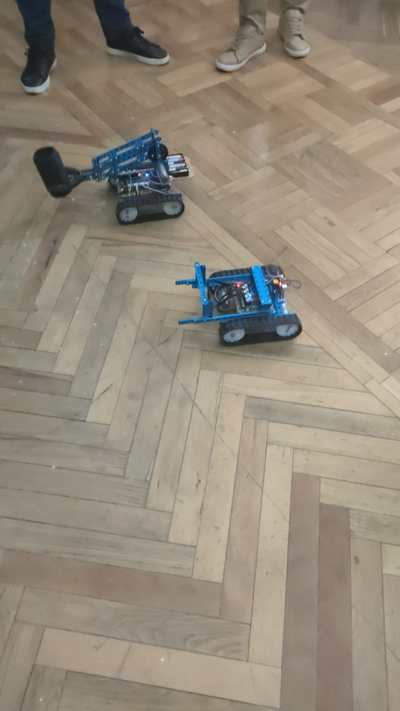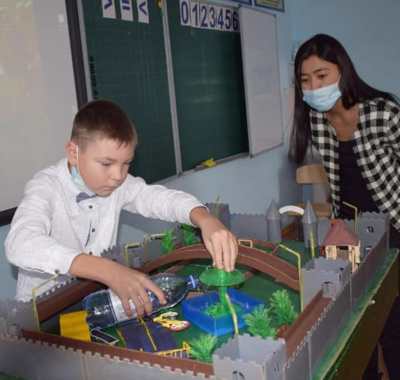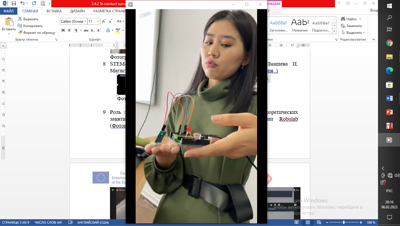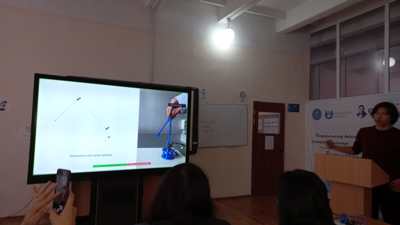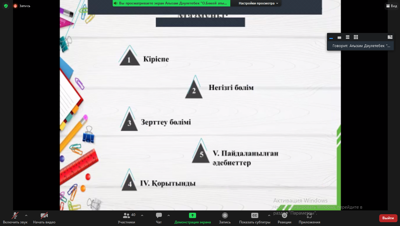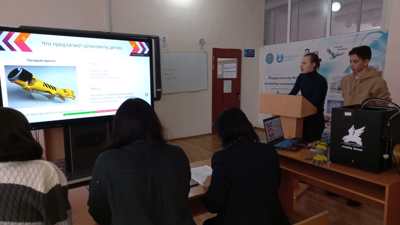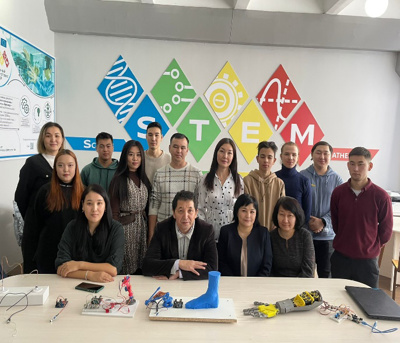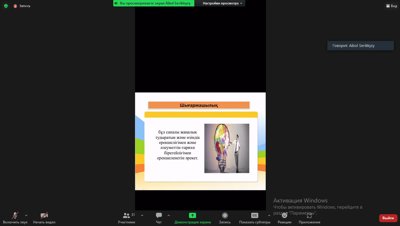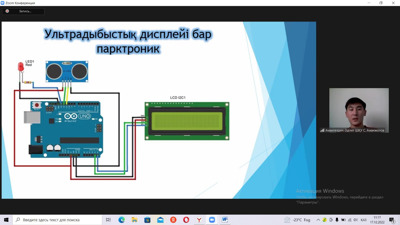The team of S.Amanzholov East Kazakhstan University held a STEM week on December 15-19, 2022 in the form of a winter school on the topic "STEM- design for robotics and 3D printing" (the format of classes is mixed). Venue – academic building No. 7 of the University, computer science teaching room, STEM center, laboratory "Robolabs".
The project team has compiled an information letter.
The event was attended by teachers and students of "Secondary school No. 35", "Secondary school No. 30", "Secondary school No. 48", "Profile school", "Higher IT College" of Ust-Kamenogorsk, Nazarbayev Intellectual School of Ust-Kamenogorsk, "Station of young technicians", "Kazakh secondary A.Bokey School of Glubokovsky district, D.Dzhambul Complex School of Tarbagatai district, Kurchum Gymnasium No. 3 of Kurchum district, teachers of Zhetysu University named after I. Zhansugurov, teachers from partner universities of L.N. Gumilev ENU, M.Auezov South Kazakhstan University.
The purpose of the winter school is to identify and attract young people focused on engineering and design activities. Education is prepared for the upcoming changes using interdisciplinarity, robotics, supra-professional competencies (flexible skills). Changes in the curriculum are gradually being made to allow students to develop potential in the rapidly developing fields of data science, robotics and artificial intelligence.
The subject of study of the participants of the winter school is a modern learning environment reflecting the achievements of the technological revolution, aimed at developing problem-solving skills, critical thinking and creativity. The STEM approach is when learners get involved in activities and develop their thinking (through observation, design, calculation, measurement and the opportunity to test their projects in the context of real life) and imagination, while developing social skills and team spirit.
The winter school program includes the following topics:
1)A parking sensor device manufactured using an ultrasonic sensor for a car. Author: Amangeldin A. – Master's degree program "STEM education". The magistrate told about how the parking sensor device for the car works
2) Automated waste sorting complex. Author: Agyzam D., Master's degree program "STEM education" (Photo 4) Together with the schoolchildren, master 's student Agyzam D. has a project to create a robotic line for sorting garbage using a set of Lego Mindstorms EV3 .There are 500 separate garbage collection points in the regional city. These are stationary containers in orange, green and gray colors. It was these containers that were taken into account when compiling the "Green Peace" rating. There are nets for plastic. Thus, in our city about 20% of the population are aware of separate waste collection. The robotic sorting model leads to the rational use of industry resources.
3) Automated solar panel. Author: Khausulkhan E.R., a student of the 9th grade "Secondary school No. 15" in Ust-Kamenogorsk. The student Khausulkhan E.R., studied how to use alternative energy sources, in physics lessons he studied topics on electricity and made a solar mini-power plant that could be transferred.
4) Examples of creating successful Start Up projects Author: A.A. Dzhakishev, teacher of the Association of Children's youth clubs "Zhiger" in Ust-Kamenogorsk. A. Dzhakishev told about several projects for business: hydroponic cultivation of vegetables in greenhouses, accessories from recycled plastic bags.
5) A simple experiment on assembling a STEM object. Author: Zhomart A. 6th grade student, Secondary school No. 48, Ust-Kamenogorsk. The student assembled a toy hydraulic manipulator made of cardboard, which moves. He used simple materials, a trolley model is created for different load capacities for transporting things by the efforts of one person.
6) Development of creative abilities in the process of teaching computer science to younger schoolchildren. Author: Serik A., Master's degree program "Computer Science"
7) Master class of digitizer design Author: B.K. Kopzhasarov, lecturer of the department, Kopzhasarov B., 5th grade student Secondary school No. 48. Together, a teacher and a student designed a three-dimensional digitizer. In this model, a three-hinged lever ending with a sensor pen is attached on an asymmetric basis. The presence of hinges allows you to draw an arc with a maximum angle of 330 °. The low-friction hinges provide almost absolute freedom of movement of the steel pen. The digitizer circles the pen around an object with a complex contour.
8) STEAM is a project for using a sound sensor. Author: Imasheva I. Graduate student, STEM Education training program. The magistrate Made a robot: the louder you shout at him, the faster he goes. Then she used this sensor when designing a security system. The robot will measure the noise level in the room and react to it: a light bulb lights up.
9) The role of the Robolab laboratory complex to accompany theoretical classes. Author: Temirkhan A., technical engineer of the Robolab laboratory. The author showed how a laptop with a camera sends an image via the Internet to a broadcast service, for example, smotri.com or ustream.tv . You can view the image from the webcam on the service page or from the page of your website. The project trains participants to use software for digital video surveillance systems: GOTCHA v.3.0.6, Active WebCam v.7.5.
10) Using a 3D printer as a visual mechatronics tool. Kusainov G., student, training program "Computer mechatronics". The student developed 3D printing projects for making various souvenir crafts. He made the translation of the drawing into the program Fusion 360, then made a translation of the G-code product drawing in the ID-TECH m-5.1.18 slicer, printed on an X-Plus printer, then assembled all the details, painted with nitrocolor. The student learned 3-D modeling, mastered design techniques.
11) Integration and implementation of the "Student Service Center" services in social networks. Author: Aset A.R., Master's degree program "Computer Science". The Student Service Center provides services in electronic and digital form through the educational portal. The master's student suggests studying the process of technical "attachment" of a certain project to pages in popular network resources such as Facebook, LiveJournal, VK (Vkontakte), Twitter, My World, Odnoklassniki and others. It offers the placement of various social media widgets. This approach can establish feedback with students before implementing dean's office initiatives.
12) Sensor of angle determination and interpretation of data Author: Tortaul N., student of the training program "Computer mechatronics". The digitizer was developed for applications of computer-aided design systems, since in this case it is necessary to determine and set the exact value of the coordinates of a large number of points. Unlike the mouse, the digitizer is able to accurately determine and process absolute coordinates. Digitization technology uses digital optical sensors. The result of the work is a scan of an object made of any material. The student printed out the 3D details of the Digitizer model and added encoders (rotation angle sensors). Encoders are used to convert linear or rotational motion into a binary digital signal.
13) The preparation of a methodological manual for the course “Mobilography” for high school. Author: Zharkyn D. Master's degree program "Computer Science". The project of an electronic textbook with materials on photographic art for reportage and household photography, in which electronic devices with a built-in digital camera, such as mobile phones, are used as a tool.
14) Prosthetic arm with a neuron after amputation of the arm. Authors: Eduardov K.V., Zhumakaev R.M. students of the 10th grade "Profile school". The authors assembled and tested a neuroprosthesis of the hand, which was used to replace sensory and motor functions. The method of signal delivery is divided into electrical stimulation of nerves in the stump.
15) STEM- projects based on the laboratory of the Station of young technicians Authors: Tajibai A., Salimova A. students training program "Computer mechatronics". The students printed out 3D details of a model of a robot loader for warehouses to perform laborious and monotonous work on unloading and sorting various cargoes in warehouses, made an electrical diagram of its control, developed a program in the Arduino programming environment to control a model of a robot loader. A human will act as an operator to configure the robot's software.
Thus, the STEM week based on the Robolabs laboratory, the STEM center of the university, demonstrated to the participants a STEM approach to teaching robotics and 3D modeling, which is used as an educational set of tools to form the basic digital concepts of students. All participants received certificates.





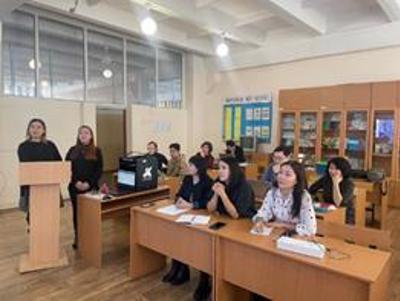
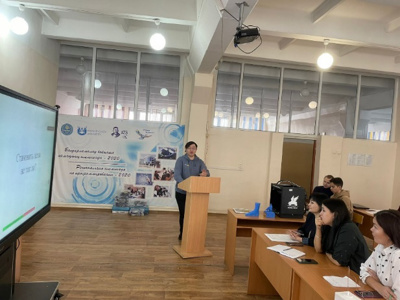
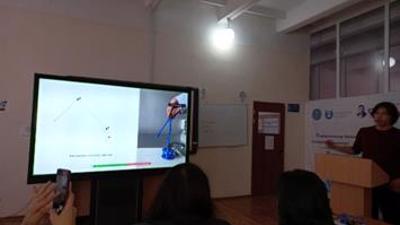
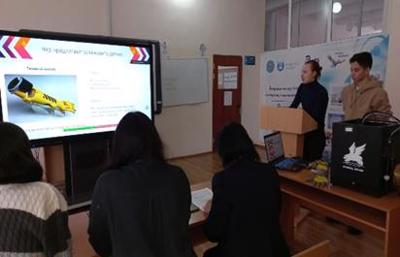
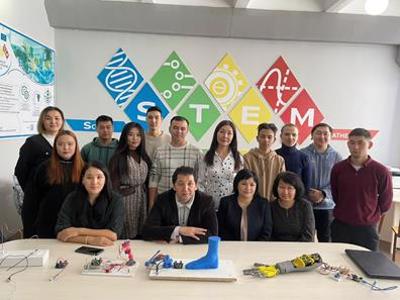
_400.jpeg)
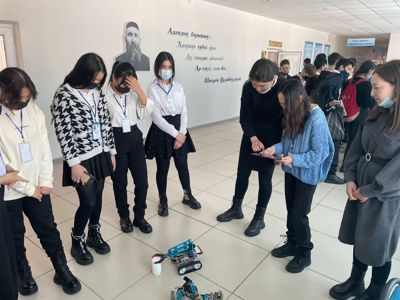
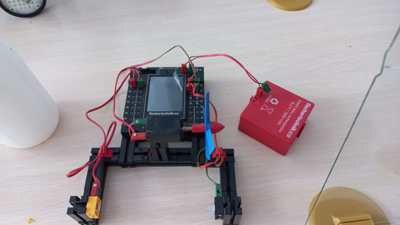
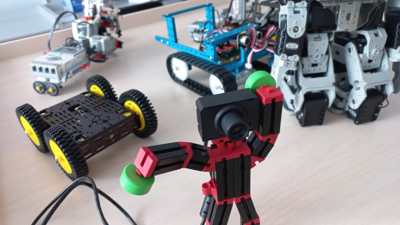

_400.jpeg)
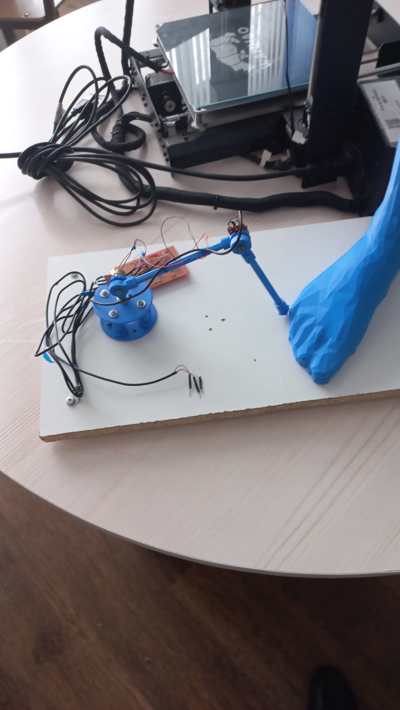
_400.jpeg)
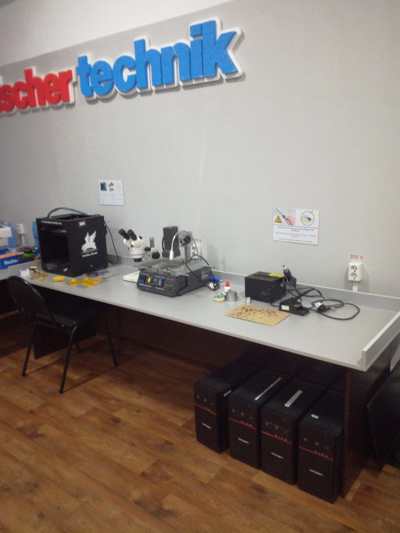
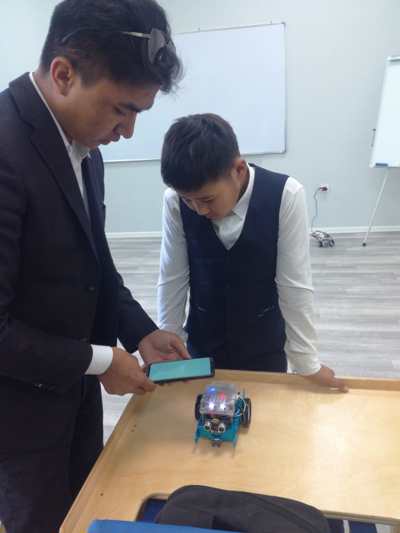
_400.jpeg)
_400.jpeg)
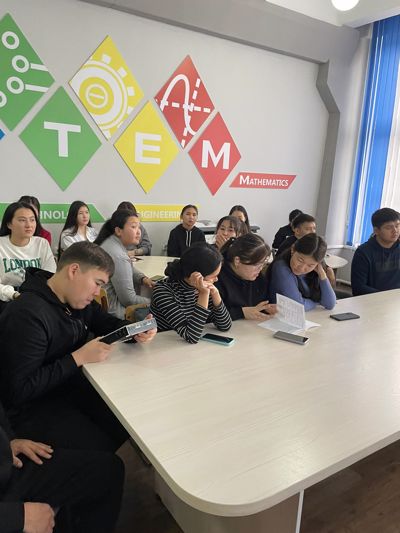
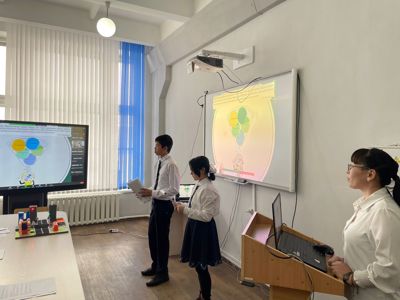
_400.jpeg)
